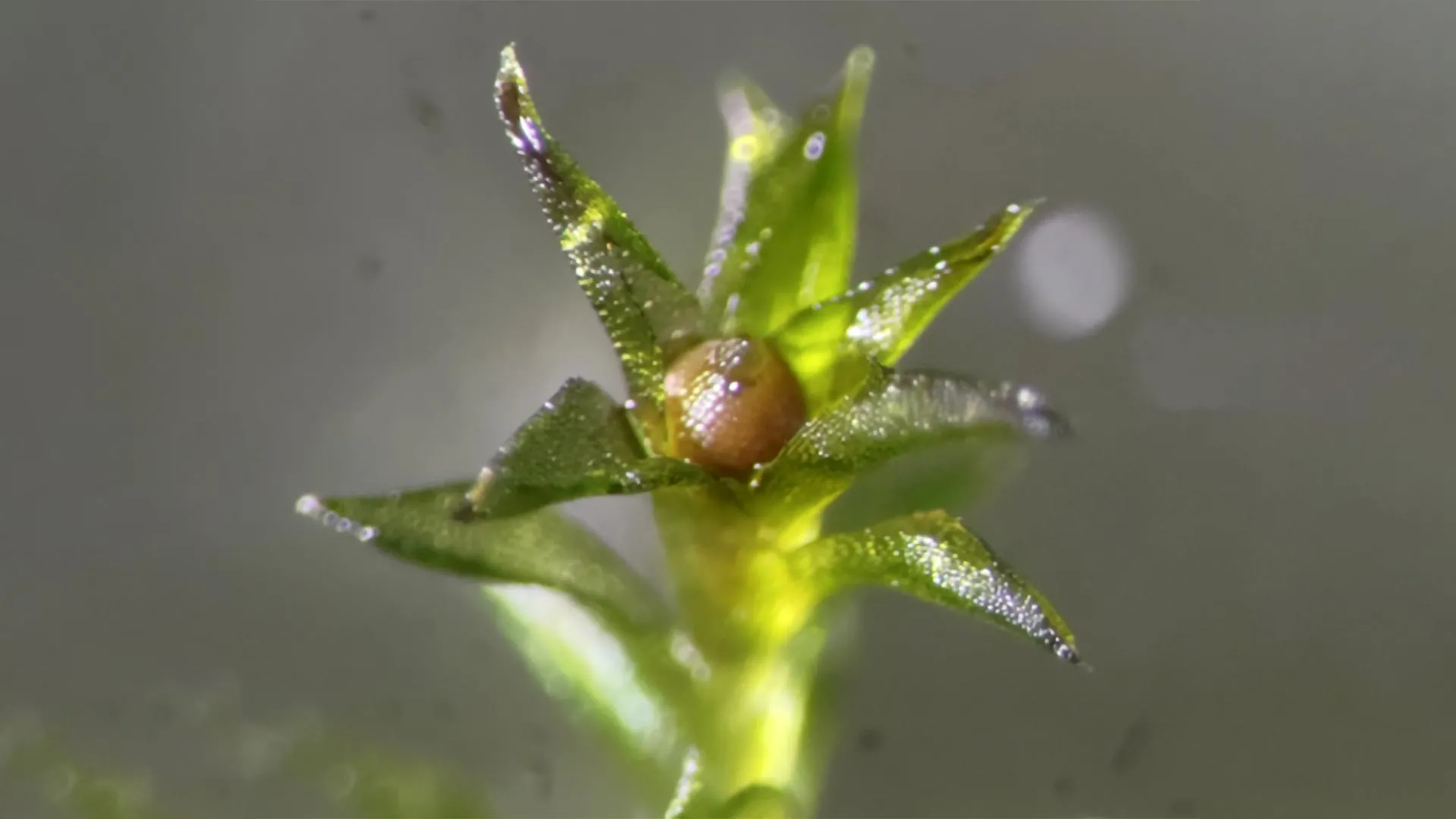This tiny plant survived the vacuum of space and still grows
- Date:
- November 24, 2025
- Source:
- Cell Press
- Summary:
- Moss spores survived an extended stay on the outside of the ISS and remained capable of germinating once back on Earth. Their resilience to vacuum, extreme temperatures, and UV radiation surprised the researchers who expected them to perish. The spores' natural protective coat likely played a key role in shielding them. The study hints at the potential for simple plants to support agriculture beyond our planet.
- Share:

Mosses are well known for surviving in places that challenge most life, including the Himalayan peaks, the scorching deserts of Death Valley, the Antarctic tundra, and the cooling surfaces of active volcanoes. Their remarkable durability led researchers to test moss sporophytes, the reproductive structures that hold spores, in an even harsher setting: outer space. According to a study published in the journal iScience on November 20, more than 80% of these spores endured 9 months outside the International Space Station (ISS) and returned to Earth still capable of reproduction. This marks the first evidence that an early land plant can survive long-term exposure to space conditions.
"Most living organisms, including humans, cannot survive even briefly in the vacuum of space," says lead author Tomomichi Fujita of Hokkaido University. "However, the moss spores retained their vitality after nine months of direct exposure. This provides striking evidence that the life that has evolved on Earth possesses, at the cellular level, intrinsic mechanisms to endure the conditions of space."
Asking Whether Moss Could Survive Beyond Earth
Fujita began exploring the possibility of "space moss" while studying plant evolution. He was impressed by mosses' ability to colonize the harshest environments on Earth. "I began to wonder: could this small yet remarkably robust plant also survive in space?"
To investigate, Fujita's team exposed Physcomitrium patens, also known as spreading earthmoss, to a simulated space environment featuring intense UV radiation, extremely high and low temperatures, and vacuum-like conditions.
Testing Moss Structures Under Extreme Stress
The researchers compared three moss forms: protenemata (juvenile moss), brood cells (stress-induced stem cells), and sporophytes (encapsulated spores). They aimed to identify which structure had the greatest likelihood of enduring space.
"We anticipated that the combined stresses of space, including vacuum, cosmic radiation, extreme temperature fluctuations, and microgravity, would cause far greater damage than any single stress alone," says Fujita.
Their experiments showed that UV radiation posed the biggest threat, and sporophytes clearly outperformed the other structures. Juvenile moss did not survive strong UV exposure or extreme temperatures. Brood cells fared better but still fell short. By contrast, the encased spores showed ~1,000x greater UV tolerance and remained capable of germination even after enduring −196°C for more than a week or 55°C for an entire month.
Why Encased Spores Withstand Harsh Conditions
The team concluded that each spore's surrounding structure likely absorbs harmful UV light and provides physical and chemical shielding. They suggest that this protective feature may have helped ancient bryophytes, the plant group that includes mosses, move from water to land roughly 500 million years ago and survive repeated mass extinctions.
To determine whether this adaptation held up in real space, the researchers sent sporophytes into orbit.
Launching Moss to the ISS for a Real-World Trial
In March 2022, hundreds of sporophytes traveled to the ISS aboard the Cygnus NG-17 spacecraft. After their arrival, astronauts mounted the samples on the exterior of the station, exposing them to space for 283 days. The specimens later returned to Earth on SpaceX CRS-16 in January 2023 and were brought back to the lab for analysis.
"We expected almost zero survival, but the result was the opposite: most of the spores survived," says Fujita. "We were genuinely astonished by the extraordinary durability of these tiny plant cells."
Strong Survival and Healthy Return to Earth
More than 80% of the spores endured the full trip, and all but 11% of those survivors successfully germinated in the laboratory. Measurements of chlorophyll showed normal levels for nearly all pigments, except for a 20% drop in chlorophyll a, a light-sensitive compound. Despite this reduction, the spores remained healthy.
"This study demonstrates the astonishing resilience of life that originated on Earth," says Fujita.
The team also used their data to build a mathematical model estimating how long the spores might last in similar conditions. Their calculation suggested a potential survival span of up to 5,600 days, or about 15 years, although they stressed that more data is needed for a firm conclusion.
Implications for Growing Life Beyond Earth
The researchers hope these findings support future studies on how extraterrestrial soils might sustain plant life and encourage efforts to use mosses in developing agricultural systems for off-world environments.
"Ultimately, we hope this work opens a new frontier toward constructing ecosystems in extraterrestrial environments such as the Moon and Mars," says Fujita. "I hope that our moss research will serve as a starting point."
This work was supported by DX scholarship Hokkaido University, JSPS KAKENHI, and the Astrobiology Center of National Institutes of Natural Sciences.
Story Source:
Materials provided by Cell Press. Note: Content may be edited for style and length.
Journal Reference:
- Chang-hyun Maeng, Yuji Hiwatashi, Keita Nakamura, Osamu Matsuda, Hajime Mita, Kaori Tomita-Yokotani, Shin-ichi Yokobori, Akihiko Yamagishi, Atsushi Kume, Tomomichi Fujita. Extreme environmental tolerance and space survivability of the moss, Physcomitrium patens. iScience, 2025; 113827 DOI: 10.1016/j.isci.2025.113827
Cite This Page: